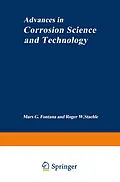This series was organized to provide a forum for review papers in the area of corrosion. The aim of these reviews is to bring certain areas of corrosion science and technology into a sharp focus. The volumes of this series will be published approximately on a yearly basis and will each contain three to five reviews. The articles in each volume will be selected in such a way to be of interest both to the corrosion scientists and the corrosion tech nologists. There is, in fact, a particular aim in juxtaposing these interests because of the importance of mutual interaction and interdisciplinarity so important in corrosion studies. It is hoped that the corrosion scientists in this way may stay abreast of the activities in corrosion technology and vice versa. In this series the term "corrosion" will be used in its very broadest sense. This will include, therefore, not only the degradation of metals in aqueous environment but also what is commonly referred to as "high temperature oxidation. " Further, the plan is to be even more general than these topics; the series will include all solids and all environments. Today, engineering solids include not only metals but glasses, ionic solids, polymeric solids, and composites of these. Environments of interest must be extended to liquid metals, a wide variety of gases, nonaqueous electrolytes, and other nonaqueous liquids.
Inhalt
1 Techniques for the Measurement of Electrode Processes at Temperatures Above 100°C.- Experimental Techniques.- Pressure Vessels and Liners.- Insulation and Sealing of Electrode Leads.- Metallized Ceramic Seals.- Compression Seals.- Line Seals.- Reference Electrodes.- High-Temperature Reference Electrodes.- External Reference Electrodes.- Application of High-Temperature Electrochemical Techniques.- Corrosion Studies.- Nonferrous Alloys.- Ferrous Materials.- Measurement of emf.- Measurement of pH.- Conductance Measurements.- Electrodeposition and Electrolysis.- Polarography.- Fuel Cells.- Acknowledgments.- References.- 2 Surface- and Environment-Sensitive Mechanical Behavior.- The Nature of Crystal Surfaces.- Clean Surfaces.- Surface Structure.- Chemical Segregation at Free Surfaces.- Space-Charge Effects.- Summary.- Environmental Effects on Crystalline Solids with Clean Surfaces.- Metals.- Clean Metals in Electrolytes.- Adsorption of Surface-Active Species.- Gaseous Environments and Vacuum Effects.- Nonmetals.- Solvent Environments (Joffe Effect).- Effects of Surface-Active Species.- Effects of Solid Surface Films.- Nonmetals.- Metals.- Mechanism of Surface Barrier Effects.- Elastic Theory.- Atomistic Nature of the Film-Substrate Interface.- Concluding Remarks.- Acknowledgments.- References.- 3 Mechanism and Phenomenology of Organic Inhibitors.- Mechanisms of the Action of Organic Inhibitors.- Adsorption.- Influence of Structural Parameters on Adsorption and Inhibition.- Action of Reduction, Polymerization, or Reaction Products.- Steric Effects.- Action of the Organic Cations.- The Role of the Metal in Inhibition.- Surface Charge of the Metal.- Cold Working.- Surface State.- Surface Treatments.- Purity of the Metal.- Hydrogen Penetration.- Methods of Studying Inhibitors.- Corrosion Rate Measurements.- Electrochemical Methods.- Radiochemical Methods.- IR and UV Spectroscopic Methods.- Mass Spectrometry and NMR Methods.- Other Methods.- Determination of Inhibitor Behavior vs Hydrogen Penetration.- Organic Inhibitors in Various Aggressive Environments.- Atmospheric Corrosion Inhibitors.- Inhibitors in the Steam Zone of Industrial Installations.- Inhibitors in Aqueous Solutions.- Inhibitors in Acid Solutions.- Inhibitors in Alkaline Solutions.- Inhibitors in a Nonaqueous Environment.- Summary.- References.- 4 Anodic Oxidation of Aluminum.- Short History.- Anodizing Processes of Current Importance and Interest.- Outline of Anodic Oxidation of Aluminum.- Scope of Anodizing Electrolytes and Their Characteristics.- Sulfuric Acid.- Oxalic Acid.- Chromic Acid.- Sulfamic Acid.- Phosphoric Acid.- Bright Anodizing.- Hard Anodizing.- Integral Color Anodizing.- Coloring by Dyestuffs and Pigments.- Special Anodizing Processes.- Anodizing in Molten Salts.- Anodizing in a Nonaqueous Solvent System.- Continuous and High-Current Anodizing.- Sealing.- Mechanism of Anodic Oxidation.- Stability and Corrosion of Aluminum (Pourbaix Diagram).- Classification of Anodic Films on Metal.- Chemical Composition of Anodic Oxide Films.- Barrier Film.- Duplex Film.- Theory of Dyeing Anodic Films.- Sealing Mechanism.- Properties of Anodic Oxide Films on Aluminum.- Corrosion Problems in Anodized Aluminum.- Acknowledgment.- References.
